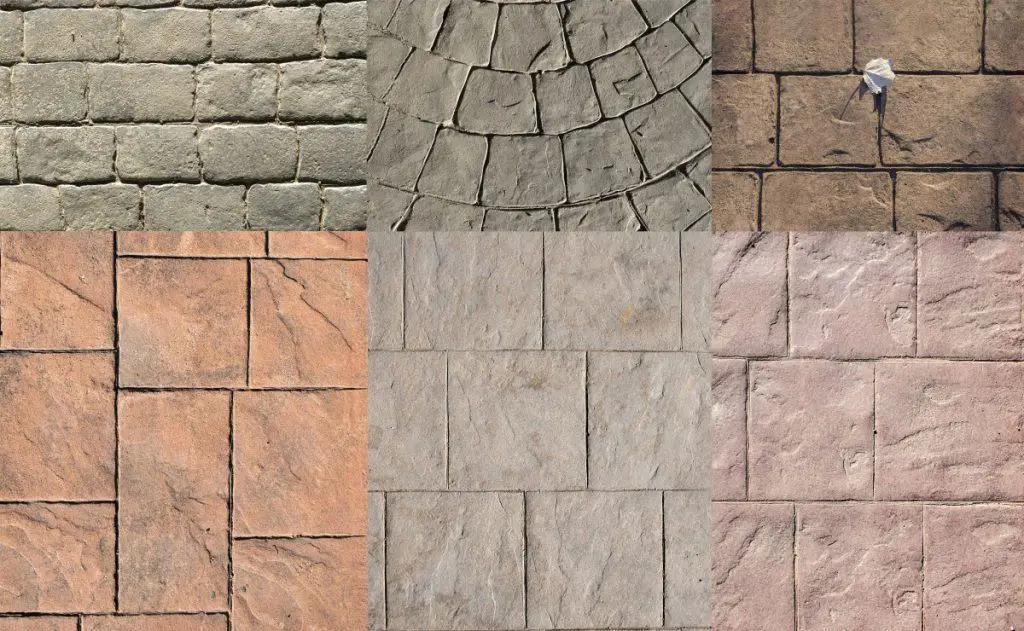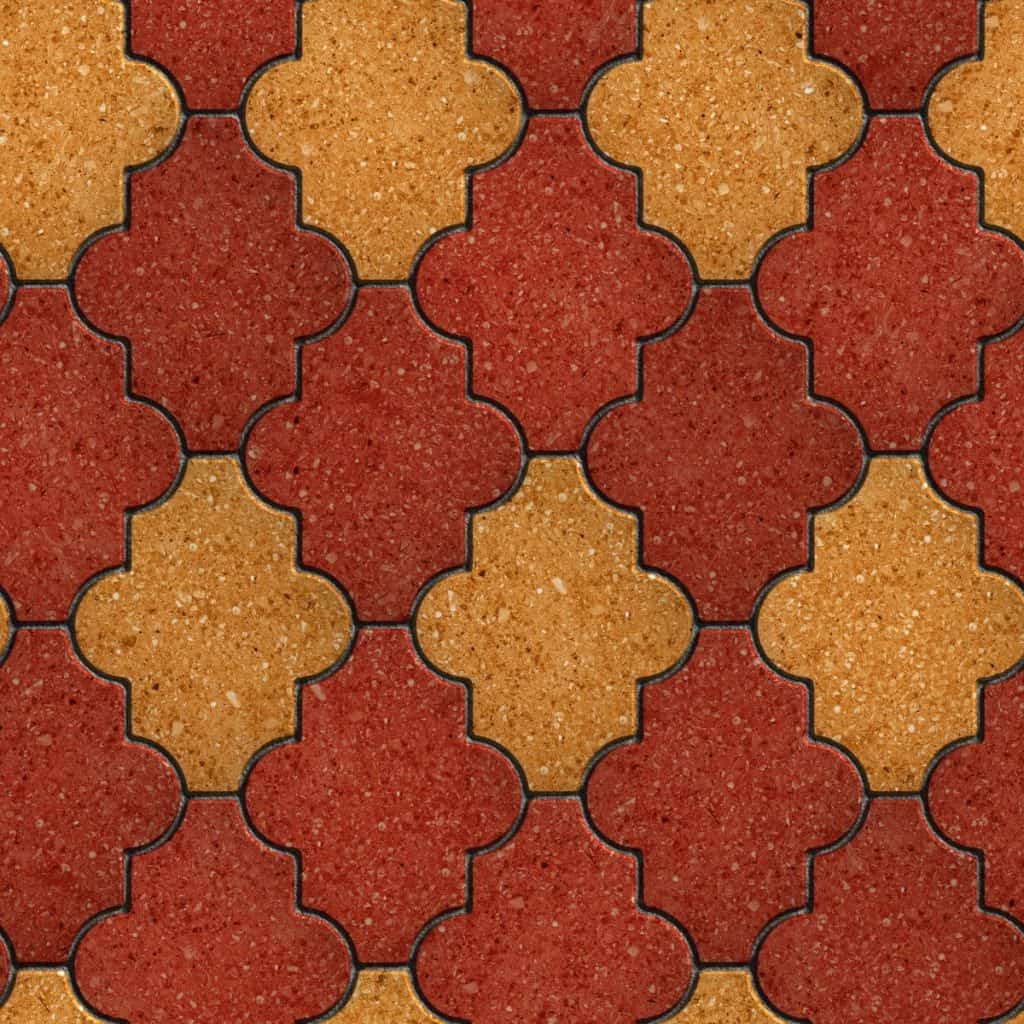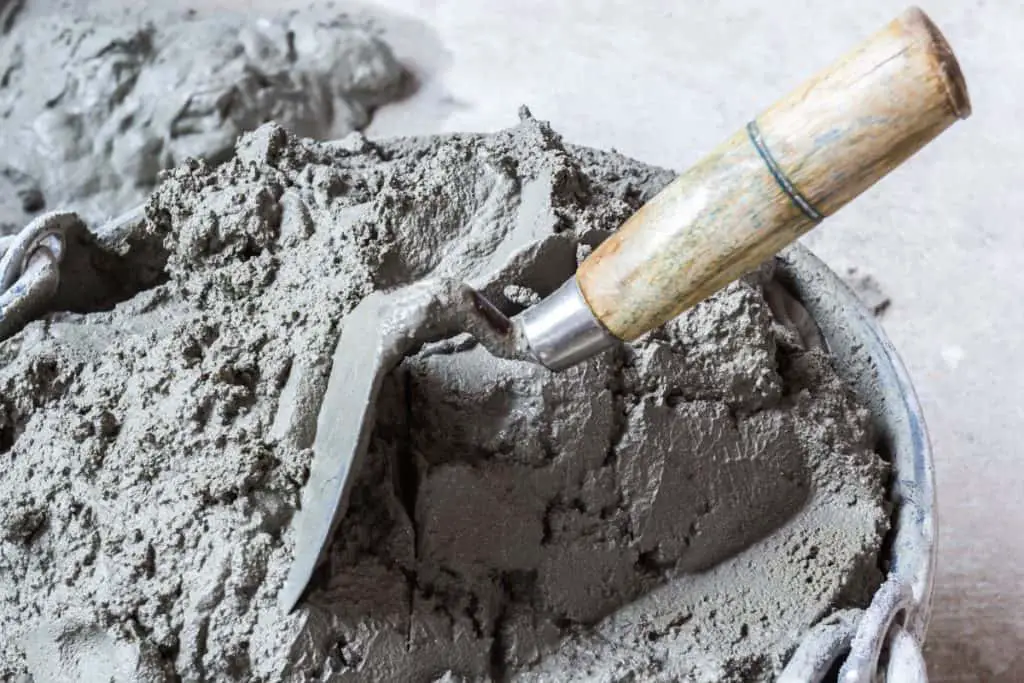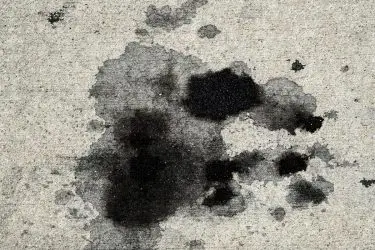Concrete is a beautiful material to use if you want a sleek but unique look for your project. This uniqueness can be expanded if you’re stamping your concrete; this will add a fun texture, pattern, or image to your concrete, making it truly your own. Appealing as this may be, you must do it right by starting with the best stamping mix.
The best commercial concrete mixes for stamping are those labeled “mortar mix” or “stamp mixes”; they are thick, pasty, and smooth. Decorative brands like Stone Edge sell reliable stamp mixes. These mixes contain extremely fine aggregates, are very dense, and should be mixed with little water.
Aside from commercial mixes, there is always the DIY route. To explore both, read on and see what we have to say about the best commercial and DIY concrete mixes for stamping.

What Concrete Stamping Is
Concrete stamping is a wonderful way to spice up any concrete surface you may be installing.
Concrete stamping is appealing as it adds a personal twist to your surface and because of the limitless options, it has. You can stamp your concrete with anything from stone patterns to wood textures to wavy designs- the options are limitless.
Check out: 11 Good-Looking Stamp Patterns for Concrete Work
Stamping is done using polyurethane stamps on semi-dry concrete. Polyurethane is a flexible, durable, and non-stick material, meaning you don’t need to worry about ruining your concrete by using stamps.
Stamps are placed on and pressed into the concrete over and over until the entirety of the surface or desired area is covered. Since the pattern is not stamped into completely wet concrete it dries with crisp, defined lines.
The type of concrete needed for stamping is different than other concretes. Most concrete mixes, like the concrete mix used for a patio, are your basic Portland cement, sand, aggregate, and water combination. Concrete mixes for stamped concrete, on the other hand, are a bit more complex.
To ensure your stamps are strong, defined, and beautiful, a bit of a special mix is needed. Your stamping concrete needs to be considerably thicker than concrete for normal pours or your design will not hold.

This special concrete mix requires less water and more cement paste than typical concrete. You should also have smaller aggregates so your pattern is not obscured by unsightly rocks or gravel chunks.
If you are doing a DIY project, be sure to remember this advice. If you are getting your surface commercially stamped, ensure that the company knows what they are doing.
Best Commercial Concrete Mixes for Stamping
Now that we’ve gone over why we need different mixes for stamped concrete and poured concrete, it’s time to get into the specifics of what commercial mixes work best.
The best concrete mixes for stamping have fine aggregates and contain a high percentage of cement powder to ensure they will provide you with that thick, smooth, ‘fatty’ mix you need for optimal concrete stamping.
The safest way to find a good mix for stamping is to get a mortar mix. If you’re unsure exactly what this is, there is an article on this website titled ‘What Concrete Uses No Rocks or Gravel?‘ that gives you all the information you need on mortar mix concretes.
To be concise, mortar mixes are concrete mixes that contain uniformly ground gravel aggregates rather than slightly broken down chunks. The aggregates in mortar mixes are much finer than those in other concrete mixes.
Other safe routes to go are mixes labeled as ‘countertop mixes’, ‘overlay mixes’, ‘resurfacers’, or ‘stamp mixes’. These concrete mixes also tend to contain higher percentages of cement powder and extremely fine aggregates.
But to make it a lot easier for you, we are going to give you some specific recommendations on reliable stamp mixes.
- Stamp Mix by Stone Edge Surfaces: This mix is stamping-specific, marketed as “A blend of cement, fine silica aggregates, and polymer create a dense, high strength, long-lasting stampable overlay.” Source.
- Quickrete Countertop Concrete Mix: This mix is not stamp-specific, but it is smooth, flexible, and dense.
- Quickrete Re-Cap Concrete Resurfacer: This mix is a resurfacing mix, meaning it is meant to go over the top of preexisting concrete. This is perfect if you are wanting to stamp a concrete surface that is already dry. This mix can be applied over that surface and stamped, creating the illusion that the original surface was a decorative one.
Best DIY Concrete Stamp Mix
If you are thinking a DIY stamping mix better suits your concrete preferences, we’ve got you covered.

You’ll need the basic concrete components, water, and a set of concrete stamps.
This mix should contain the following:
- Water
- Portland Cement
- Sand
- Fine aggregates (such as finely-ground gravel)
Your average concrete mix is proportioned as such: 1 part of cement + 2 parts of sand + 4 parts of fine aggregate. Concrete for stamping, however, should contain at least one more part of cement and one less of aggregate, making your mix pasty and smooth.
Once you’ve mixed your concrete, be sure your surface is excavated and prepared for a pour. If you’re sure your surface is ready, get to pouring!
After you’ve poured the concrete and let it sit for a while, lay your stamps out on the surface and evenly compress them into the surface, being sure they make a solid imprint before you move on to the next section of stamps.
Once your concrete is all stamped, finish it as usual and bathe in the satisfaction of completing this taxing project on your own.



